This article was reviewed by Steve Snedeker, professional landscaper.
Planting in containers is a great way to save space and control soil issues. However, it can be a challenge finding suitable plants for smaller conditions. If you're looking for flowering shrubs to grow in containers, you're in luck. We've researched and compiled a list of plants!
Take a look at these tremendous compact flowering shrubs.
- Japanese Andromeda (Pieris japonica)
- Little Princess Spiraea (Spiraea japonica 'Little Princess')
- Rhododendron
- Firethorn (Pyracantha)
- Shrubby Cinquefoil (Potentilla fruticosa)
- Japanese Skimmia (Skimmia japonica)
- Winter Heath (Erica carnea)
- Bluebeard (Caryopteris x clandonensis)
- Summersweet (Clethra alnifolia)
- Dwarf Fothergilla (Fothergilla gardenii)
- English Lavender (Lavandula angustifolia)
These fantastic plants will add color and beautiful scents to your garden throughout the year. Keep reading to learn more about what these plants look like, when they bloom, and if they provide any benefits to your garden!

1. Japanese Andromeda
The Dwarf Lily-of-the-Valley shrub (Pieris japonica 'Cavatine') takes up to 10 years to reach its mature height of 2 feet. The white, bell-shaped flowers bloom in the early spring, usually around mid-March.
You'll typically see these flowers between 2 and 3 weeks. Japanese Andromeda plants are suitable for attracting butterflies and are good sources of nectar for bees.
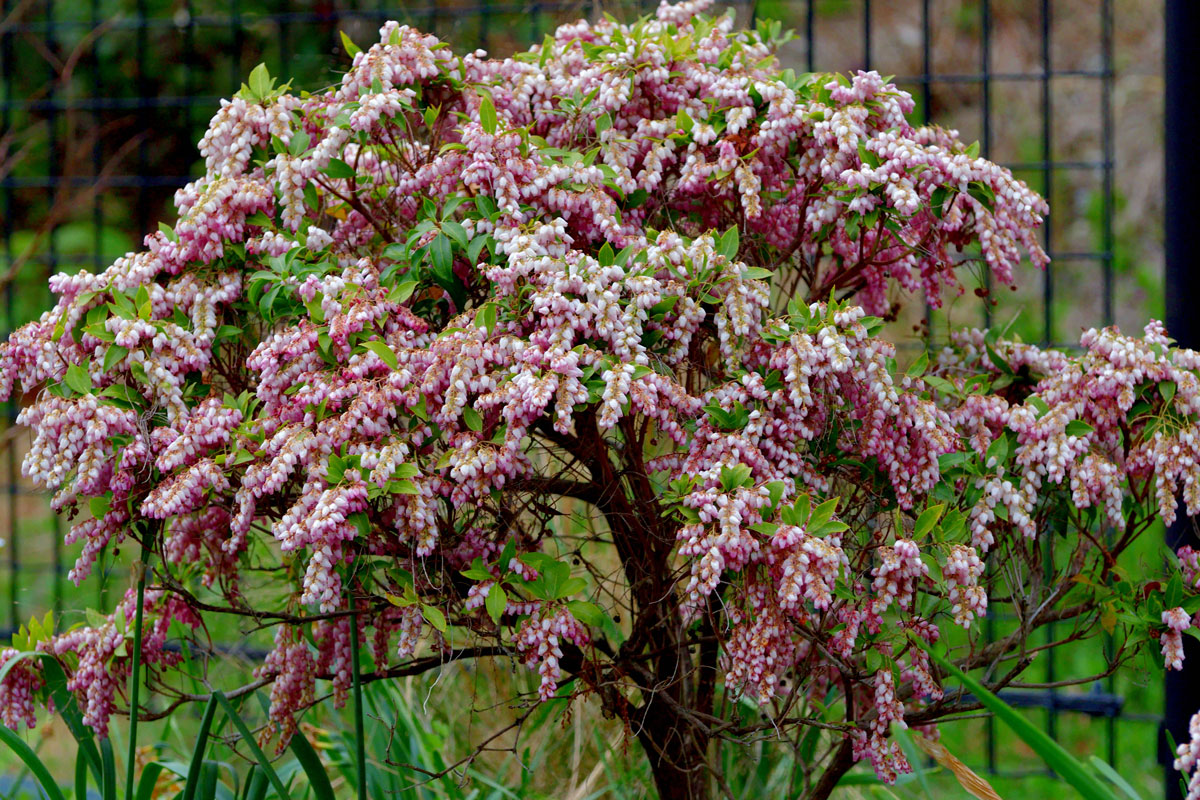
While beautiful to see in the spring, these shrubs are beautiful to see all year round. The Dwarf Lily-of-the-Valley has dark green leaves that are visible even in the winter.
2. Little Princess Japanese Spiraea
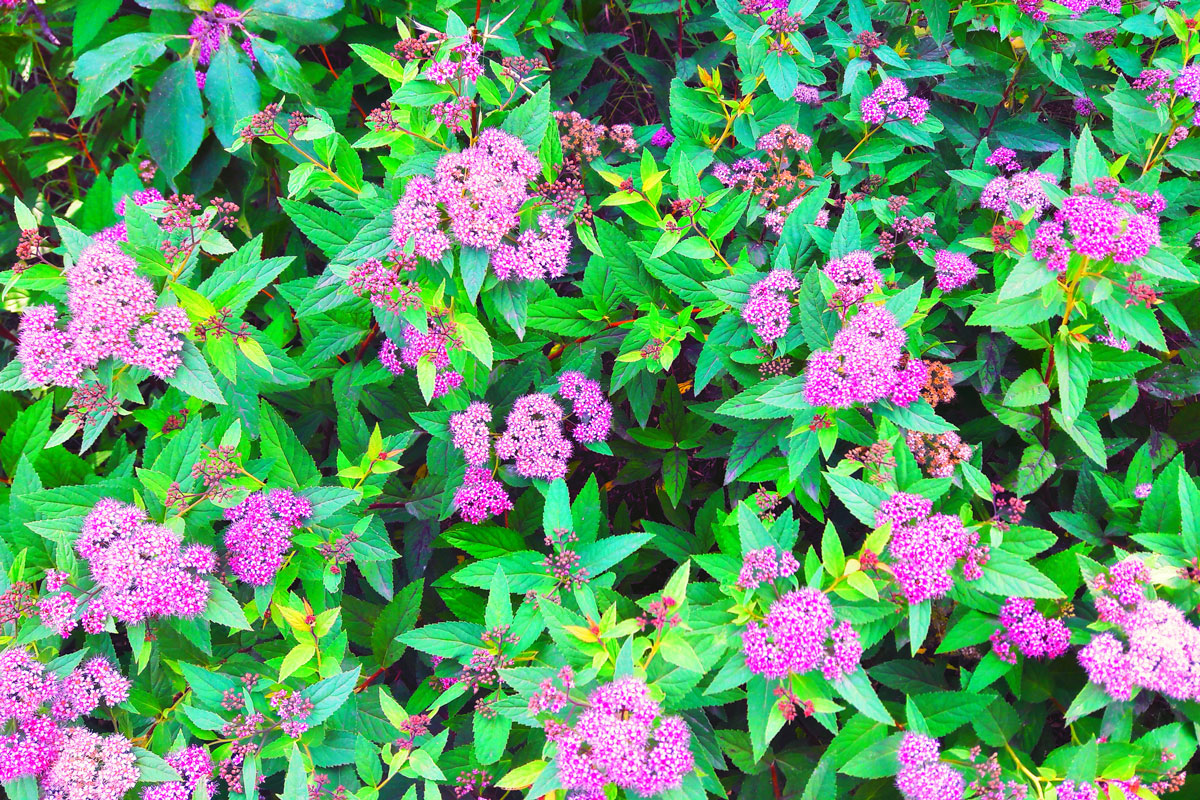
Japanese spiraea is a deciduous shrub that blooms from June to July. The pink flowers produced by this plant are fragrant and can attract butterflies.
The Little Princess cultivar for this plant has a mature height of 3 feet. This plant tends to spread. It can measure as wide as six feet. Japanese spiraea is easy to care for.
Once established, they are resistant to drought and deer. They can also tolerate a range of light conditions.
Unfortunately, Japanese spiraea can be invasive. Be careful when selecting this plant. It has been known to displace naturally occurring plants and vegetation.
3. Rhododendron
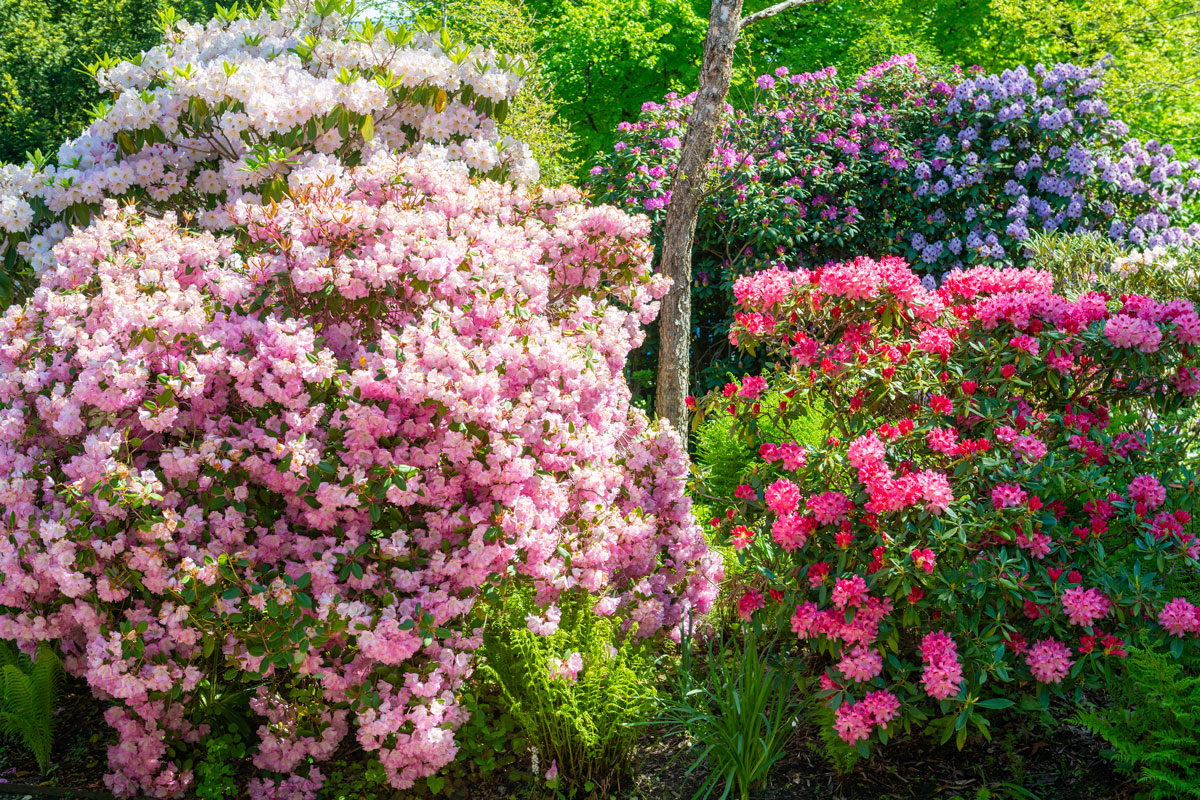
Rhododendron is a group of shrubs that contains around 1,000 different species of plants. One excellent choice for this plant is the Rhododendron 'Elviira'. The Elviira has red, funnel-shaped flowers. These flowers will grow in groups of 6 to 10.
The Elviira rhododendron is a slow grower. This plant will reach a mature height of 2 feet in approximately 10 years.
Another great shrub is the Rhododendron 'Windsong'. This plant has yellow, funnel-shaped flowers. Each truss will usually hold 17 flowers. You'll see blooms from this plant from spring to early summer.
Windsong plants are slow growing. It typically takes them 10 years to reach their mature heights. These shrubs will grow between 2 and 4 feet tall and 2 and 4 feet wide.
Why pick one? Check out this fantastic container for multiple plants on Amazon!
4. Firethorn
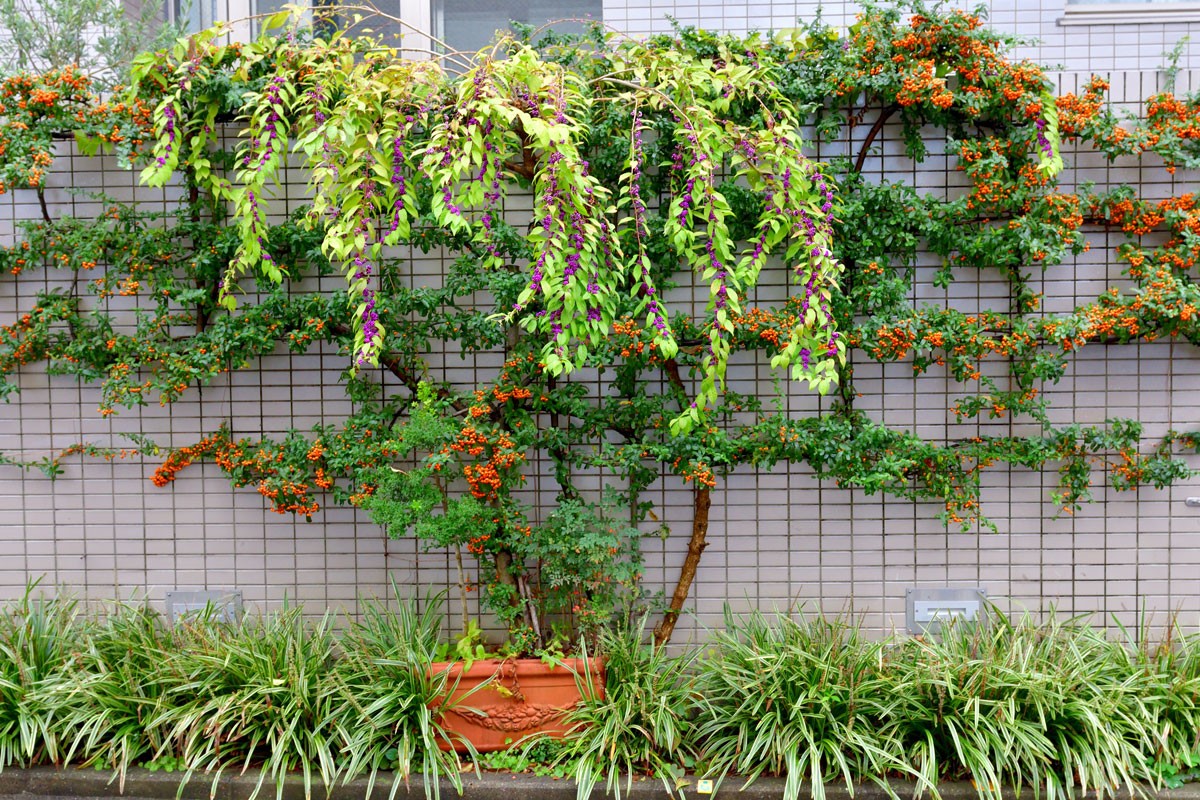
Pyracantha plants are semi-evergreen shrubs that are well-known for the red berries that they produce. The popular scarlet firethorn (Pyracantha coccinea) is one popular type that is excellent for container planting.
When grown as shrubs, many firethorns won't exceed 8 feet in height. 'Tiny Tim' and 'Low Boy' are two cultivars that won't exceed three feet in height. These plants usually spread horizontally. The low boy firethorn can spread up to 8 feet.
Firethorns produce small white flowers from late spring to summer. Then, they produce red or orange fruits in the fall to winter. These plants typically have thorns. However, the Tiny Tim cultivar doesn't.
Unfortunately, these plants can be challenging to care for. Many cultivars are susceptible to many different diseases. Some things to look for are scab, fire blight, leaf blight, root rot, and scales.
5. Shrubby Cinquefoil
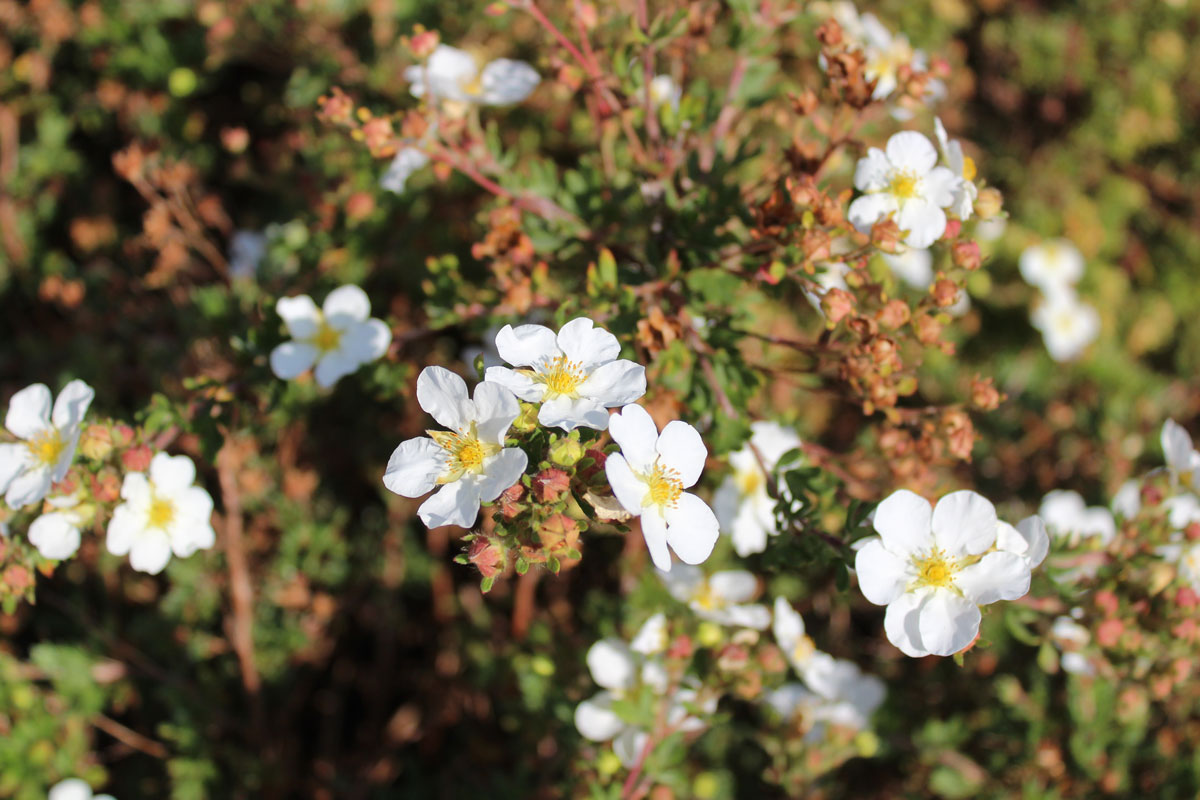
Shrubby cinquefoil is a deciduous shrub that is round and bushy. These plants will be between 2 and 4 feet tall and wide at maturity.
The shrubby cinquefoil produces small, five-petaled flowers from June until September. You'll typically find shrubby cinquefoil with white or yellow flowers. Although, some cultivars have pink and red flowers instead.
These plants are relatively low maintenance. They prefer full sun and well-drained soils. However, once established, the shrubby cinquefoil is tolerant of a wide variety of problems.
6. Japanese Skimmia
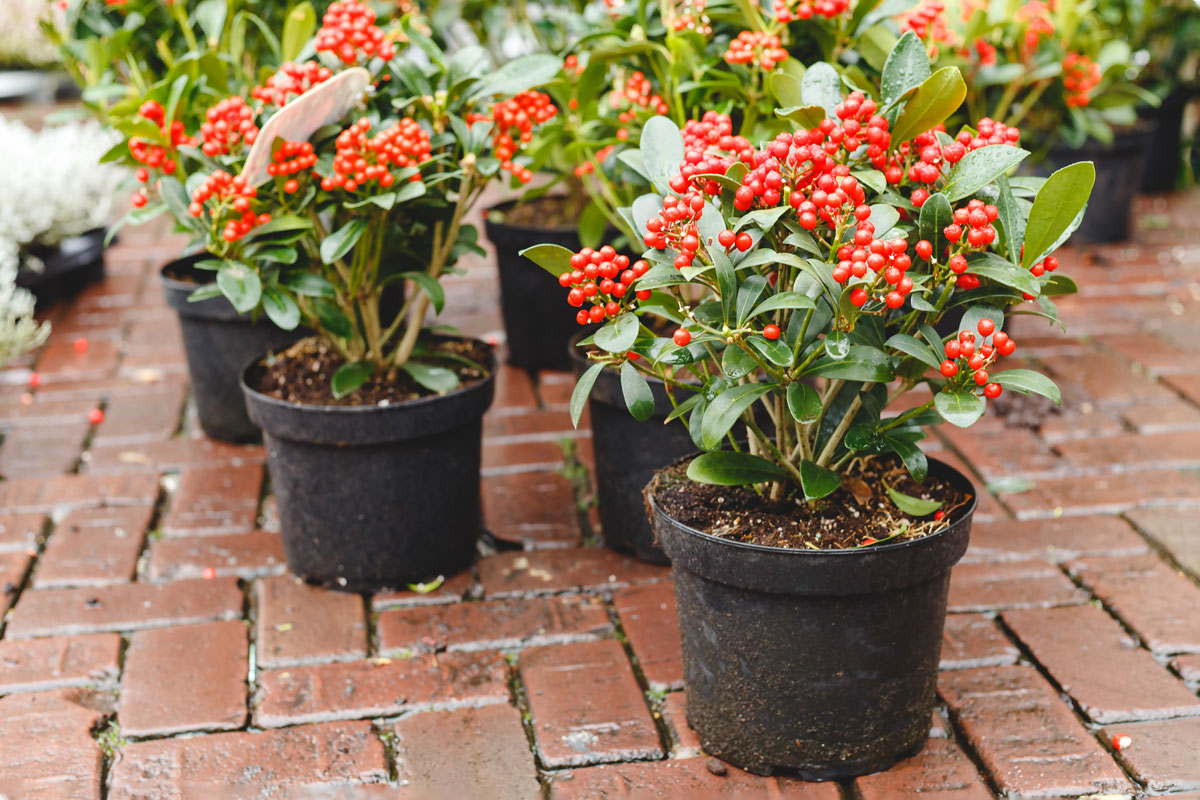
The Japanese skimmia is a short and dense shrub that produces fragrant flowers. These plants will be between 3 and 4 feet tall at maturity. They also grow between 4 and 5 feet wide.
Female plants tend to grow wider and will produce red fruit in the fall. Male plants tend to make more fragrant flowers. However, male Japanese skimmia won't have any berries. You can expect to see blooms around April.
These plants are pretty low maintenance and are resistant to diseases. The Japanese skimmia is also tolerant of heavy shade.
Be careful to avoid too much sun. It can cause the leaves to scorch. You should also avoid eating the berries. They can cause an upset stomach.
7. Winter heath
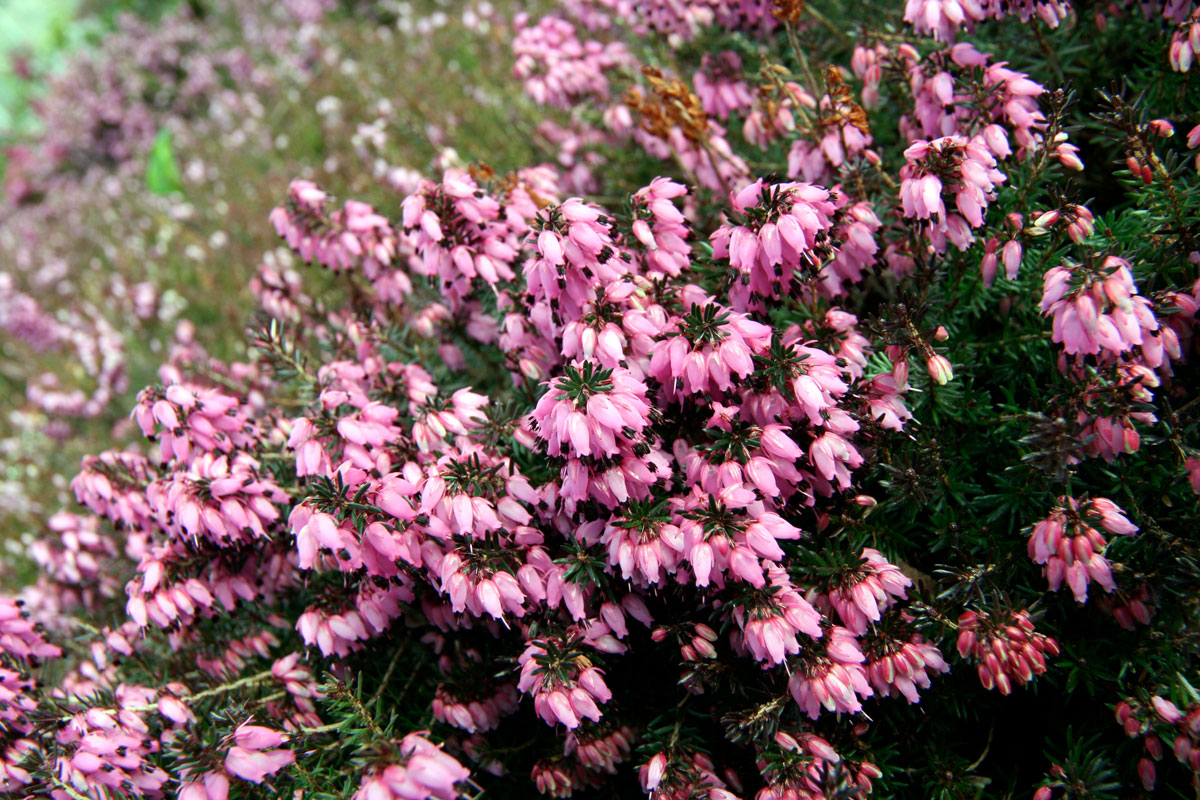
The winter heath (Erica carnea) is an evergreen shrub that needs well-drained soils. In frequently waterlogged soil, this plant is prone to root rot. Otherwise, this plant doesn't have many plant, disease, or pest issues.
This is a short shrub that is often used as a ground cover. This plant typically won't exceed a foot in height. The most common sizes range between 6 and 9 inches.
You can expect the winter heath to grow more horizontally. This plant can grow between 1 and 2 feet wide.
These plants tend to bloom in the winter seasons. Erica carnea 'December Red' blooms from December to February. Erica carnea 'Springwood White' can bloom as late as May.
Winter heaths have bell-shaped flowers. They are typically white or pink.
8. Bluebeard

The bluebeard or blue mist shrub (Caryopteris x clandonensis) is a hybrid of Caryopteris incana and Caryopteris mongholica. This deciduous shrub has an average height of between 2 and 3 feet tall.
This plant produces blue flowers that attract butterflies and bees. You can expect to see these flowers from late summer to early fall. This can help provide a pop of color when other plants are starting to lose their vibrancy.
You should give these plants a full day's worth of sunlight. Fortunately, these plants are low maintenance. They may need occasional pruning in the springtime.
There's also a slight risk of capsid bug. Otherwise, winter heaths are pest free and resistant to rabbits and deer.
9. Summersweet
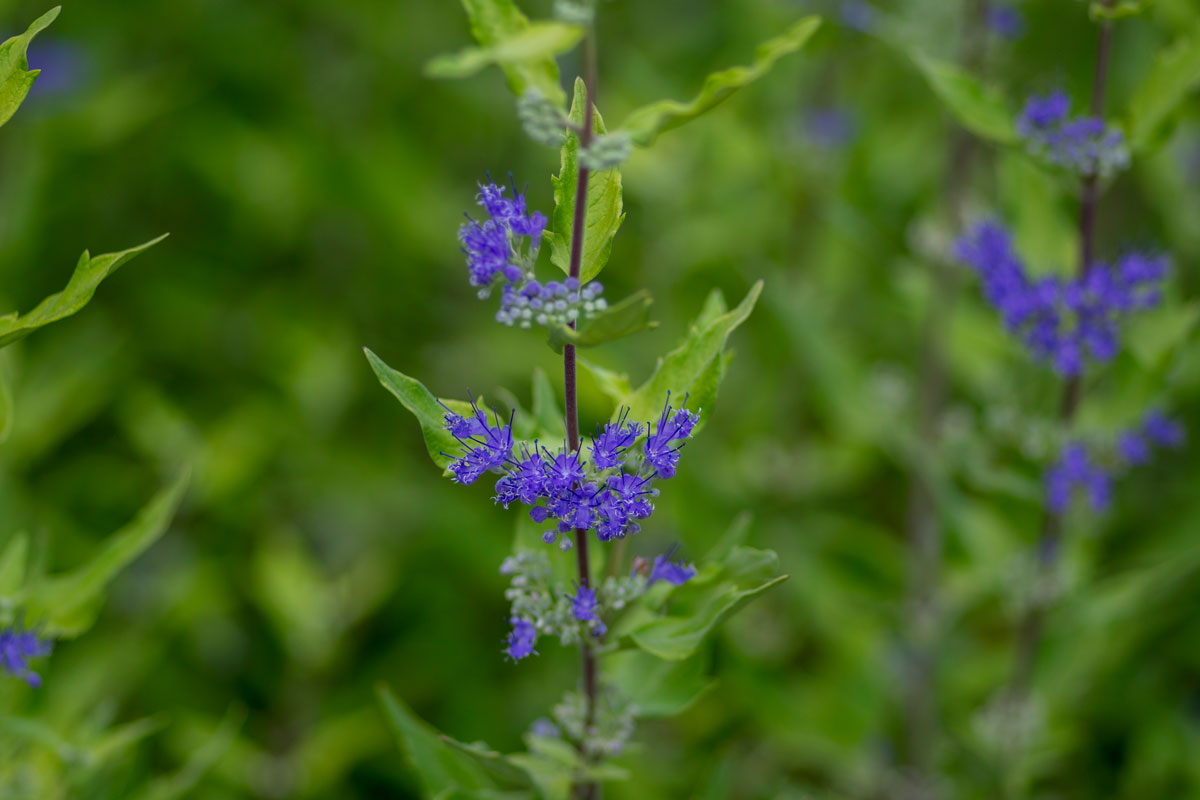
The Summersweet (Clethra alnifolia) is a deciduous shrub with fragrant flowers. You can expect to see these flowers in the late summer. While the flowers are typically white, some cultivars like Clethra alnifolia 'Rosea' are pink.
The plants will bloom for approximately 4 to 6 weeks. The flowers are great for attracting bees and butterflies. After the flowers, the summersweet produces fruits. Birds and small animals eat these dark brown fruits.
These shrubs typically grow between 3 and 6 feet tall. However, in some instances, they can reach as high as 8 feet. These plants are fairly easy to care for.
Summersweets are resistant to many insect and disease problems. However, spider mites can be a problem in hot conditions.
10. Dwarf Fothergilla

Dwarf fothergilla, sometimes known as witch-alder, is a deciduous shrub grown best in slightly acidic, moist soil. At maturity, this plant is between 2 and 3 feet tall and wide.
In the spring, dwarf fothergilla produces honey-scented flowers. They bloom from April until May. Dwarf fothergilla flowers are typically between one and three inches long.
This plant typically produces its leaves after the flowers. So, come summer, you'll have a beautiful blue-green shrub. Then, in fall, those leaves will turn yellow, orange, and red. All three colors are present on each leaf.
11. English Lavender
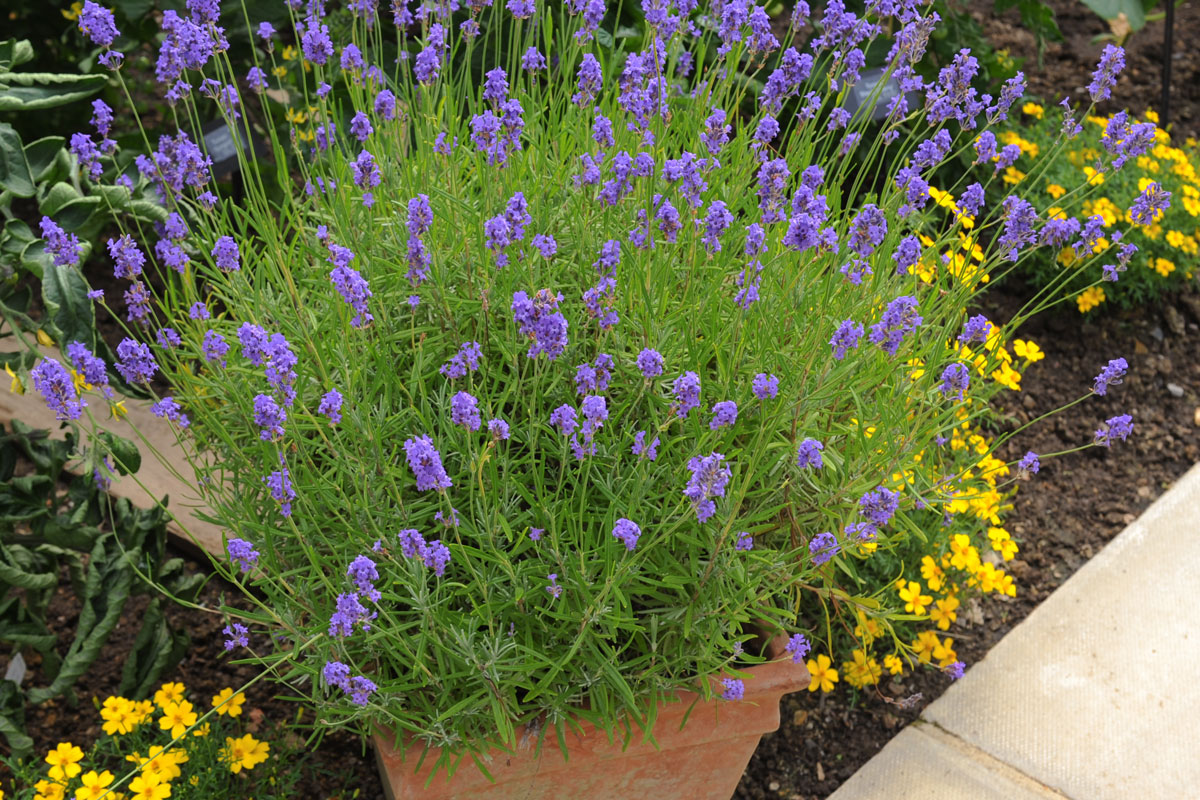
Many types of lavender plants grow well in containers. However, English lavender (Lavendula angustifolia) tends to be the more popular choice. This lavender is versatile and tends to lack the problems that Spanish lavender (Lavandula stoechas) has.
Common lavender has spike-shaped flowers that are typically purple. However, you can also find pink and white flowers. This plant is in season from June until August.
The flowers are good for attracting butterflies and pollinators. However, they are slightly poisonous to dogs, cats, and horses.
While common lavender can be hardier than other lavender, this plant still requires some attention. It's important that you plant this in well-drained soil. Root rot is a common problem for lavender.
Nutrition is important! Check out this fertilizer on Amazon.
In Conclusion
Planting in containers can be helpful for small spaces or places with bad soil. Thankfully, there are a lot of different flowering shrubs that are perfect for container gardening.


